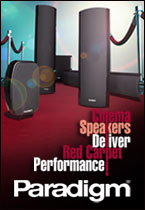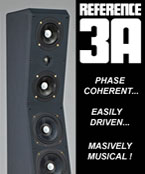Bowers & Wilkins (B&W) is an audio product company that is based in its home town of Worthing, West Sussex, England and is part of the B&W Group. The B&W Group owns B&W and Classé Audio, distributing both of their products, as well as those of Rotel, a Japanese-based audio product company. B&W, as part of the B&W Group, is now one of the leading audio product companies in the world, possessing massive resources, technology and expertise. In recent years, B&W has introduced a number of products that are compatible with Apple i-devices. These products include the Zeppelin Air, Zeppelin Mini and MM-1 powered speaker docks, as well as the company’s first headphone, the P5. In June 2011, B&W added another headphone product to its line-up, the company’s first in-ear design—the C5 In-Ear Headphone ($179.95). Given my recent experience using the Paradigm SHIFT E3m earphones (reviewed in the June/July 2012 issue), from another loudspeaker-based company that recently entered the earphone market, I jumped at the chance to review the C5.
It was in early July that I received the C5. Opening the shipping box, I got my first glimpse of the product packaging and couldn’t help but grin. An elegant gatefold box cover revealed the C5 within a framed window, eloquently posed to demonstrate both its rear face and profile. Opening the box, I found the C5 was snugly mounted to a moulded plastic plate that effectively maintained its posture. I know better than to judge a product by its packaging but I have to give the B&W marketing team a thumbs-up, nicely done. Within the box was the C5, a printed manual, three additional soft eartips and a petite black quilt-stitched faux-suede half-moon zippered case…enough hyphens already.
Examining the C5, I was impressed with the fit, finish and feel. Each earpiece was painted in gloss black, tastefully adorned with the “Bowers & Wilkins” name, in white font. The back or outward facing end was angled with a flat face that displayed the B&W Micro Porous Filter. This filter had a distinctive and jewel-like appearance, given its steel micro-ball matrix structure, and is designed to serve as a diffuser (quasi-open-back), which is purported to provide a more spacious sound. On the opposite, inward end was a typical silicon eartip. The body of the earpiece was larger and heavier than others I’ve used, in part due to tungsten weighting used to tip the earpiece inwards, towards the ear.
Another unique feature was the C5’s Secure Loop. This Secure Loop is a clear flex-tube that surrounds the cable for about 3.5 inches, as it exits the earpiece. The loop exits on one side of the earpiece and loops around it where it slides into a notch on the opposite side, forming the shape of the letter “p”. This semi-flexible loop can be adjusted in size by sliding it through the earpiece notch. The Secure Loop is designed to push against the inner circumference of the outer ear, called the concha, and keep the earpiece secure, as explained in the manual.
The C5 employs silver-coloured, twisted OFC cables that lie within a semi-flexible clear sheathing. The headphone plug housing, as well as the Y-splitter and inline multi-function remote/mic, are all made of a glossy black plastic that aesthetically complements the silver cables – adding to the sophisticated look of the C5. The inline multi-function remote/mic has three buttons, which I was unable to fully utilize, as I don’t own an i-device. I should mention that when I tried using it with my Blackberry Torch, I was unable to hear or be heard on calls and couldn’t control the volume. The manual states that functionality may be limited with non-compatible devices, so I assume that my Blackberry Torch falls into this unfortunate category.
On the technical side, the C5 utilizes a 9 mm driver and has a published frequency response of 10 Hz to 20 kHz. The sensitivity is 118 dB/V at 1 kHz and THD is specified THD at less than 1%. Impendence is 32 ohms, which makes them portable audio device friendly.
I used the C5 in-ear headphones for about two months, while travelling to-and-from work, at leisure and while sitting at my PC. I have found my ears to be somewhat difficult to please in terms of earbuds but have had some success with in-ear headphones. With a little trial and error I settled on the medium tips, which provided a good seal and stayed put when used in conjunction with the Secure Loop. However, the Secure Loop took a little getting used to and may not be for everyone, as it can become tiresome to use for extended listening. Cable noise was not an issue for me and I found that the cables were very resistant to tangles, virtually springing open. Unfortunately, the cables did not drape as well as I would have hoped – maintaining some curl that was not in keeping with the overall chic look of the C5. I should also note that I found the C5 to provide less outside noise isolation then I’m accustomed to with in-ear headphones and I gather this is a trade-off of the quasi-open-back design.
The majority of my listening was done using a portable Sony Walkman Digital Media Player, loaded primarily with WAV files at 1411 kbps. I also used my Grant Fidelity tube-buffered DAC-09 connected to my PC via SPDIF coaxial, while listening to ALAC files in iTunes. I found the C5 performed considerably better with the DAC-09, suggesting that they like power. I compared the C5 to the Paradigm SHIFT E3m earphones that I recently reviewed, as well to my Grado SR80 headphones.
I began with Taya Tan, a track from Pink Martini’s Hey Eugene album. This is a wonderful album and quality recording that explores a number of music styles and languages. China Forbes sings Taya Tan in Japanese, making it an even more interesting listen. The C5 delivered this track in a very open and airy manner, coming surprisingly close but not quite matching the level of my Grado SR80 open-back headphones. China’s voice was conveyed with brilliant clarity, while maintaining a velvety quality. Guitar plucks were very well defined, while strikes on the triangle carried an incisive leading edge, though a bit short in shimmer and sustain. Bass notes on this track were impressive, delivered with significant impact and tightness, exceeding the performance of both my Grado SR80 and the Paradigm SHIFT E3m. The closing violin sang with a good share of upper frequency extension. In comparison, the Paradigm SHIFT E3m provided a slightly smaller soundstage with less air, though delivering an extra dollop of midrange warmth. China Forbes’ siren-like voice was delivered with impressive clarity and detail by the C5, though the C5 could not reveal the warm undertone that her diaphragm imparts to her voice. Moving to the Arabic spoken track, Bukra Wba’do on the same album, the opening six strikes on a glockenspiel was brought forth with bell-like clarity using the C5; however, the C5 did not convey the bar-like resonance tone of the instrument, as the E3m did. I started to feel that with all the air and cleanness the C5 could deliver, it was somewhat reserved in revealing upper-register harmonics.
Next, I put on the latest remaster of the Jazz classic album Kind of Blue. In the track Flamenco Sketches, the opening plucks of the upright bass had a lovely tension and lower extension with the C5. Miles trumpet came in with precision, revealing every inflection and breath. The alto sax had warmth and definition, bringing forth its internal resonance and revealing space around it, while John Coltrane’s tenor sax was identifiable by its lower tone. Cymbal strikes were clear, yet somewhat limited in their completeness, coming across as somewhat dry. In contrast, the E3m portrayed the upright acoustic bass notes with less tension but with more body resonance and complexity. The trumpet, as delivered through the E3m, carried with it a level of warmth and metallic texture that the C5 did not fully reveal. In addition, the E3m depicted both saxophones with a level of lushness that was not present with the C5.
Playing the album Live It Out, from the alternative rock band Metric, provided another perspective on the C5. I was surprised to hear how much more civilized it depicted Emily Haines’ vocals, as compared with my Grado SR80. The Grado made the track Monster Hospital sound harsh, with Emily’s lovely voice sounding unpleasant at anything approaching a high volume, whereas the C5 delivered this track in a comparatively smooth and composed manner. Emily’s voice was clear and controlled, which allowed me to appreciate it, even at high volume levels. Again, I noticed a dryness in the cymbals, making them sound a bit abrupt, whereas, the E3m depicted them in a fuller, more brassy manner that seemed more genuine. Drums with both the E3m and C5 were impactful though the C5 delivered an obviously more chiselled and authoritative take on low frequency notes.
Overall, I was impressed with the clarity, instrument separation and soundstaging that the B&W C5 In-ear Headphones delivered. I would gather that the Micro Porous Filter had much to do with enabling the C5 to approach the Grado in its openness. In terms of detail retrieval, the C5 was clearly a high performer, providing clean, crisp and tight sound with good upper extension and formidable lower frequency reach and dynamics. I was very impressed with the quality and quantity of bass that the C5 could muster up, which it rendered with tightness, accuracy and weight - a difficult combination to find. It was in the areas of tonal complexity, harmonics and mid-range warmth, that the C5 came up slightly short, somewhat diluting them in favour of leading-edge definition and transient response. Due to this, the C5 seemed to provide more emphasis on detail retrieval than on serving up an organic portrayal of voices and high frequencies. At under $200, given the design, performance and build, I believe the C5 is a competitive alternative and worthy of audition, especially for those looking for a lean, incisive and well composed presentation with firm bass.
Bowers & Wilkins
www.bowers-wilkins.com
(978) 664 2870
B&W C5 In-ear Headphones
Price: $179.95 CAD
Click here to discuss this article on the CANADA HiFi Forum












